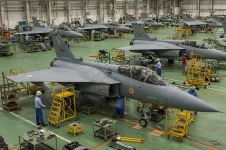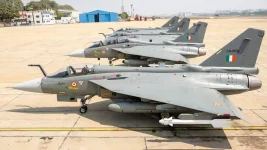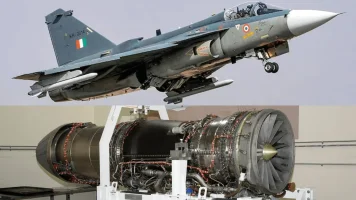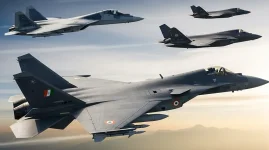- Views: 4K
- Replies: 45

The Indian Air Force (IAF) is looking to accelerate the production of its indigenous Tejas Mk2 fighter jet by enlisting the help of private sector manufacturers.
This move comes as the IAF anticipates a potential production bottleneck stemming from high demand for the Tejas Mk1A, which may strain the capacity of Hindustan Aeronautics Limited (HAL).
HAL, the state-owned aerospace and defence company, had initially planned to produce the Tejas Mk1A using three production lines, with a capacity of 24 jets per year.
However, recent orders for an additional 97 Mk1A aircraft have extended the production timeline to 2031-32. This delay pushes back HAL's ability to fully transition its facilities to manufacturing the more advanced Tejas Mk2, which was originally slated to begin in 2029.
While HAL aims to commence limited Mk2 production in 2029, full-scale production wouldn't be possible until mid-2035 due to existing infrastructure limitations. This timeline doesn't align with the IAF's desire for a faster rollout of the Mk2.
To bridge this gap, the IAF is proposing a solution where a private company would establish a dedicated production line for the Tejas Mk2, with a capacity of 5 jets annually. This would ensure a steady supply of the advanced fighter jets while HAL scales up its own production capabilities.
The potential order of 120 Mk2 jets, with further plans for 80-90 more, presents a lucrative opportunity for private sector involvement. The IAF estimates that up to 40 jets could be outsourced, offering a significant boost to the chosen company's aerospace manufacturing portfolio.
Discussions are currently underway with three private companies that have previously expressed interest in the Advanced Medium Combat Aircraft (AMCA) program, another indigenous fighter jet project. These companies are being evaluated for their potential to manage a smaller Tejas Mk2 production line alongside their future AMCA work.
This initiative reflects the IAF's commitment to modernizing its fleet with domestically produced aircraft while leveraging the capabilities of the private sector to enhance production capacity and meet its operational requirements.





